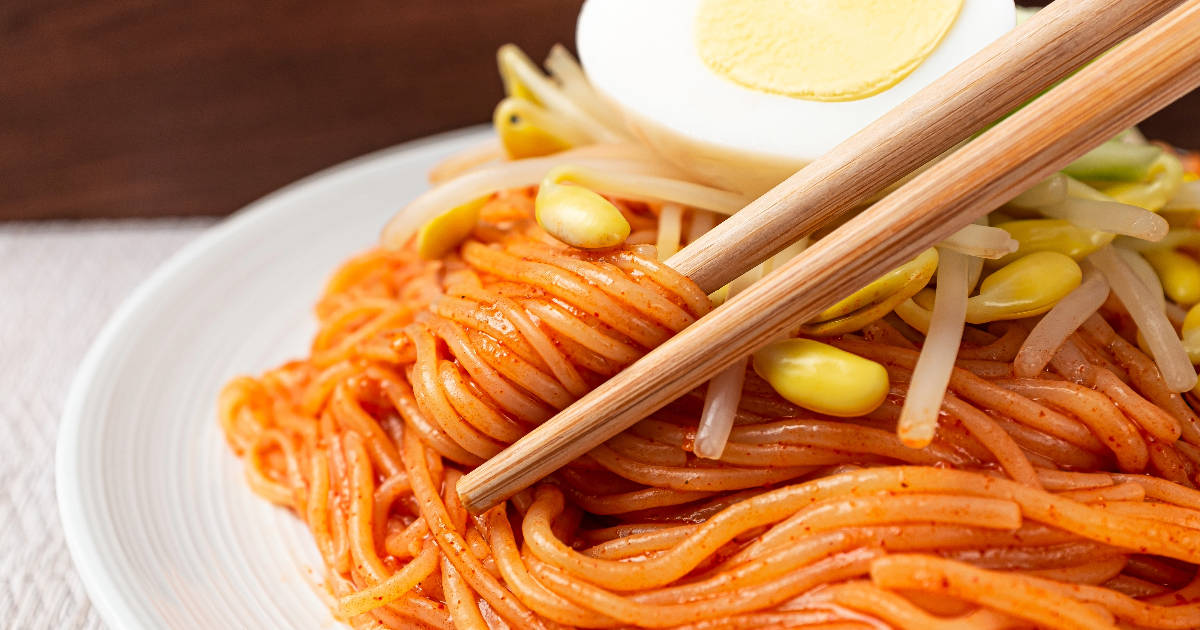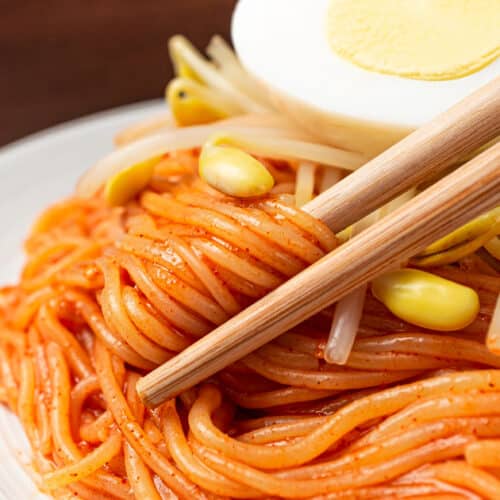Gochujang buttered noodles are the ultimate comfort food, combining rich and creamy butter with the addictive sweet-spicy kick of gochujang. This easy yet flavorful noodle dish was inspired by renowned chef Eric Kim and has become an internet sensation.

If you love noodles and are looking to add some excitement to your weeknight dinners, you need to try making gochujang buttered noodles.
Simplicity is Key With Just a Few Core Ingredients
Part of what makes gochujang buttered noodles so appealing is that the ingredient list is short and simple. At its core, this recipe calls for just noodles, butter, garlic, gochujang, honey, and vinegar. With these few humble ingredients, you can make a restaurant-worthy dish at home any night of the week.
For the noodles, long pasta like spaghetti works beautifully, absorbing all the rich butter-chili sauce. But you could also use ramen, udon, or rice noodles if you prefer.
The sauce starts by cooking down sizzling garlic in melted butter. Then comes the gochujang, a Korean fermented chili paste that lends a sweet yet spicy kick along with a distinctive earthy, umami depth. Gochujang can range from mild to blisteringly hot, so pick one to suit your spice tolerance.
A touch of honey balances out the heat with natural sweetness. Rice vinegar or sherry vinegar provides a bright, tangy contrast. As the sauce simmers, the ingredients meld into a luxuriously glossy, brick-red mixture that clings lusciously to every strand of pasta.
The Cooking Process Couldn't Be Simpler
Part of the widespread popularity of gochujang buttered noodles is that they come together in a flash. From start to finish, you'll have a hot bowl of noodles in under 30 minutes.
First, boil a pot of salted water and cook your noodles al dente. Drain, reserving some of the starchy pasta water for later.
While the noodles are boiling, start the sauce. Melt the butter in a skillet over medium-low heat. Add the minced garlic and let it infuse the butter, cooking gently so it softens without burning.
Next, whisk in the gochujang, honey, and vinegar. Raise the heat to medium-high and simmer the sauce for a few minutes until slightly thickened. The sauce will turn an enticing deep red.
Transfer the hot drained noodles into the saucepan and toss everything together. Add splashes of the reserved pasta water to adjust the consistency if needed. Finally, stir in a touch more butter to finish.
Customize Each Bowl With Fresh Toppings
The fun doesn't stop once the noodles are sauced. Gochujang buttered noodles are infinitely adaptable to customize with your favorite flavors and textures.
For a fresh punch of color and crunch, scatter thinly sliced scallions or cilantro on top. Other quick veggie topping ideas include shredded carrots, sliced cucumbers, or kimchi.
Sprinkling on some toasted sesame seeds adds a nutty aroma and pleasing texture. A final drizzle of sesame oil boosts another layer of flavor.
You could take it in a cheesy direction with a garnish of shredded cheese like mozzarella, cheddar, or Parmesan. Meat lovers can toss on cooked, sliced proteins like chicken, beef, shrimp, or bacon.
Store Leftovers Safely for Easy Reheating
Like many noodle dishes, gochujang buttered noodles taste exceptionally good and freshly cooked. But you can absolutely make a double batch and refrigerate or freeze leftovers.
For short-term storage, transfer cooled noodles to an airtight container and refrigerate for up to 5 days. The noodles may clump together; simply break them up again when reheating.
For longer freezer storage, spread cooked noodles in a single layer on a sheet pan and freeze until solid. Transfer to zip-top freezer bags. Frozen noodles will keep for 2-3 months.
To reheat, add desired portions to a skillet with a little water or broth. Heat through over medium, adding more liquid to loosen if needed. You can also reheat in the microwave, stirring in splashes of water to prevent drying out.
Inspired Versions Open Up Flavor Possibilities
The original gochujang buttered noodles recipe has spawned many inspired adaptations adding new ingredients and global flair. Here are just some of the creative remixes out there:
- Mexican style with spicy adobo sauce instead of gochujang
- Coconut curry noodles with red curry paste
- Cheese sauce noodles with grated Parmesan or melted cheese
- Pesto gochujang noodles with basil and pine nuts
- Miso butter noodles with white or red miso paste
- Spicy peanut noodles with peanut butter and sriracha
The variations are endless, so try swapping in your favorite flavors. Still craving more noodle ideas? Check out recipes for sesame noodles, pad Thai, lo mein, ramen, pasta bolognese, cacio e pepe, carbonara, and more.
Make It a Meal with Simple Protein and Veggie Additions
While wonderfully delicious on their own, gochujang buttered noodles pair perfectly with other ingredients to make a complete meal.
For extra protein, sauté bites of chicken, beef, pork, shrimp, or tofu to mix in or top the noodles. You could also poach an egg to top each bowl.
Any quick-cooking veggies work well too. Try wilted greens, sautéed mushrooms, roasted broccoli, or sheet pan vegetables.
Take your noodles in a soup direction by topping them with hot broth or chili crisp oil. Or go salad style with chopped raw vegetables and a drizzle of sesame dressing.
However you choose to enjoy them, gochujang buttered noodles are sure to satisfy thanks to their crave-worthy spicy, savory, sweet, and tangy flavors. This recipe is a pantry game-changer worth adding to your regular dinner rotation.
FAQs
What type of noodles should I use?
Long noodles like spaghetti or linguine work well, but you can use ramen, udon, rice noodles, or whatever you have handy. Avoid using egg noodles or pasta shapes like penne as the sauce won't coat them as nicely.
Can I make it vegan?
Yes, by swapping the butter for vegan butter or olive oil and using maple syrup instead of honey. Leave out the optional cheese or meat toppings.
What if I don't have gochujang paste?
You can substitute sriracha or another chili garlic sauce. Or make your own quick gochujang blend using chili powder, miso paste, honey, and sesame oil.
Can I prepare the dish ahead?
You can make the sauce up to 5 days ahead. Cook the noodles when ready to serve. The finished dish holds for 5 days refrigerated or 2-3 months frozen.
How spicy does it taste?
It depends on the level of heat in the gochujang. For mild spice, use a brand labeled "mild" and start with less, adding more to taste.
Conclusion
Gochujang buttered noodles offer an easy way to add excitement and big, bold flavor to weeknight dinners.
Their short ingredient list, quick cooking time, and versatile flavor combinations make them an appealing addition to your regular meal rotation.

Gochujang Buttered Noodles
Ingredients
- 7 oz long noodles of your choice
- 4 Tbsp butter, divided
- 5 cloves garlic, minced
- 1/4 tsp salt
- 1/4 tsp black pepper
- 2 Tbsp gochujang (Korean chili paste)
- 2 Tbsp honey
- 2 Tbsp rice wine vinegar
- 1/4 cup pasta cooking water, reserved
- 1 green onion, chopped
Instructions
- In a pot of salted boiling water, cook noodles al dente. Drain, reserving 1⁄4 cup pasta water.
- In a skillet over medium-low heat, melt 3 Tbsp butter. Add garlic and sauté for 30 seconds.
- Add salt, pepper, gochujang, honey, and vinegar. Simmer for 3 minutes.
- Add cooked noodles and remaining 1 Tbsp butter. Toss everything to coat.
- Add pasta water as needed to loosen sauce. Cook for 3-5 minutes until noodles absorb sauce.
- Top with green onions and serve immediately.
Notes
- Add sesame seeds, herbs, shredded cheese, or cooked meat as topping options.
- For a single serving, use 4-5 oz noodles and reduce ingredient amounts.
- Make ahead by preparing sauce and cooking noodles separately up to 2 days in advance.

